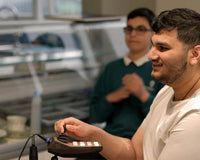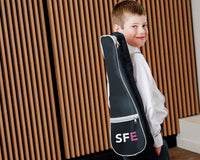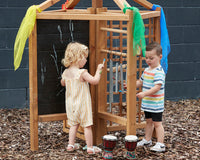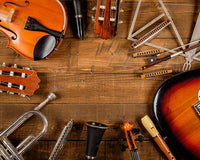From classical to electric and bass guitars, there is so much to the guitar world that is useful to know when picking up a new instrument. We have compiled the most common terms for guitar parts and playing techniques to guide you through any confusion whether you are a complete novice or want to learn more.
Fretboard – usually made of maple or rosewood, the fretboard forms the top of the neck where your fingers depress the strings in order to play.
Strings – these are different for each guitar. Classical guitars, for example, have lighter necks and will therefore need Nylon Strings. Using steel strings on a classical guitar can cause severe damage to the neck.
Truss Rod – this is a large metal rod which runs the length of the neck in steel string acoustics and electric guitars. The rod counteracts the tension and forward pull of the strings and keeps the neck straight. Over time, you may need to adjust the truss rod to correct forward or backward bowing of the neck.
Gauge – this refers to the thickness of the strings used. The thinner the string, the easier they are to bend and produce a brighter sound. Heavier strings are harder to bend but work well for chord based rhythm work.
Tuning Pegs – these are the nuts that sit at the top of a guitars neck. Altering these alters the tuning of the strings. Generally, guitar is tuned to EADGBE (Standard tuning) but there are many variations to try.
Action – this is the distance between the strings and the fretboard. Guitars with a poor action will have a bigger gap between the strings and fretboard, which will make the guitar harder to play. Similarly, an action that is too close to the fretboard will cause buzzing.
Soundboard/Table/Body – this is the top of the guitar and allows the instrument to create its sound. More expensive guitars use different woods to create different sound, although cheaper instrument will just use a ‘laminate’ which is a compression of cheaper woods.
Frets – these are the spaces in between the metal strips on the neck. Each fret raises the pitch by a half tone (So the bottom E string will become F on the first fret, F# on the second and so on).
Bridge – this is found at the bottom end of the guitar where the strings anchor in the saddle. If any adjustments to the action are needed they’re usually carried out at the bridge. The Saddle keeps it all from coming away from the body and helps transmitting the vibrations of the strings to the soundboard of the guitar. On Electric guitars you’ll also see moving bridges utilised with a Wammy Bar – this is used to bend the notes and alter pitch upwards; although the Floyd Rose Flying Bridges allow for bending both higher and lower in pitch.
Performance Techniques Alternate picking – picking in alternate directions.
Barre Chord – the technique that involves placing the left hand index finger over two to six strings in the fingering of a chord. Barre chords can be applied to any fret.
Capo – usually a metal bar that is attached to the neck of a guitar and is held by a string, spring or a band and thumbscrew. This device is used to raise the key of a song and also to lower the action and shorten the length of the strings.
Cutaway – a scooped area usually located on the upper right bout of the body to provide better access to high frets.
Harmonics – A note played that prevents vibration of certain overtones that gives a chime like sound and is achieved by lightly touching the string on the harmonic frets.
Lead guitar – the solo part played by lead guitarist in a band.
Pentatonic Scale – a five-note scale, particularly popular in rock.
Picking – producing a sound on the guitar using fingers or a pick, often referring to a single melody line.
Power Chord – a chord that involves the first, the fifth and the octave of the scale. These are commonly used in rock music.
Rhythm guitar –involves rhythmic strumming to back up the lead guitarist, singer or other performers.
Strumming – performed with a pick or fingers.
Tab – music notation system for fretted instruments using numbers or letters indicating the fret on lines that represent strings.
Tuner – a tuning device.




















